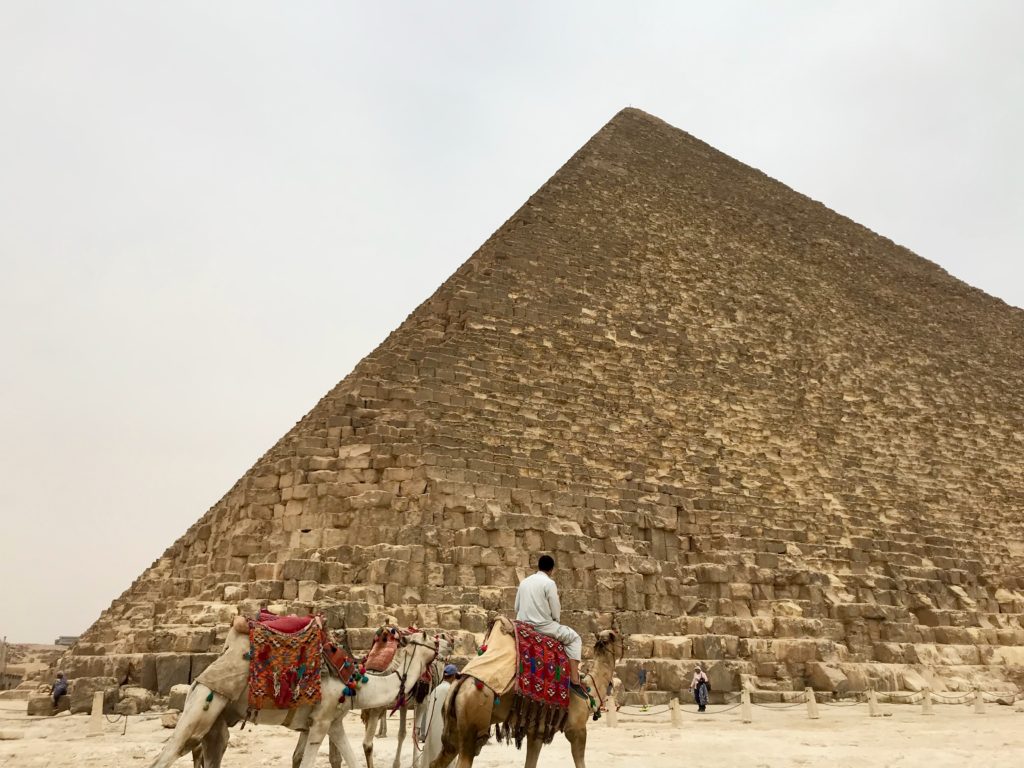We travel a lot and aren’t easily shaken. We did just fine in Medellin where there was very little English, we loved the ebb and flow of motorbikes in Hanoi, and we thrived in Beijing even though we had no idea what was happening ever. But our first night in Cairo was a lot to handle. Cairo is crazy.

Islamic Cairo during the daytime is actually quite beautiful, but it gets overwhelming as the night falls
The first thing we learned was that the cars don’t stop: not if the light is red, not if there is a person there, not if a car is there, not ever. We loved the traffic in Hanoi because it was fluid; you could walk across any street and the motorbikes would separate and flow around you. In Cairo, it’s full-size cars that are flying at you and they’re not even pretending to flow around you.
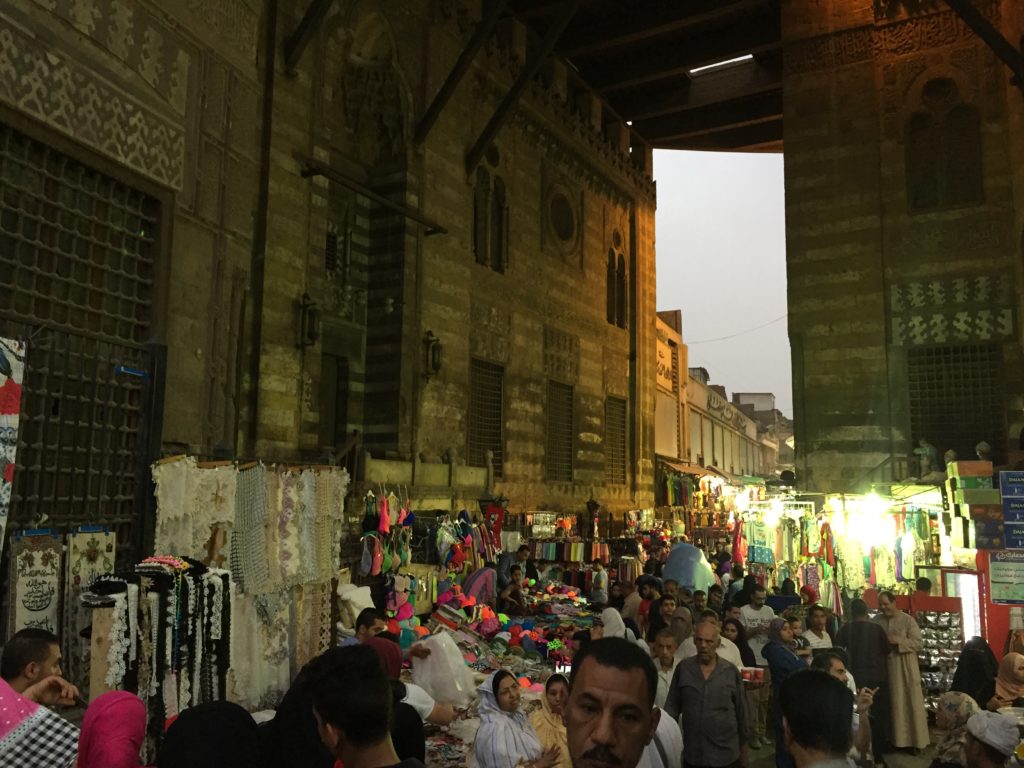
This is Moez Street — a tiny street that forms the backbone of Islamic Cairo. It’s packed solid with market stalls and pedestrians, but that doesn’t stop cars and motorbikes from driving through anyway.
At one point, Kenny had made it across a huge intersection, but I was stuck on the other side like a scared puppy. Every time I tried to cross, ten more cars would come rushing at me. There was a kid watching — he couldn’t have been 10 — and after a while, he finally took off his headphones and says, “Lady!” I look over and he is gesturing for me to just go, and I couldn’t help but laugh. If a 10-year-old kid isn’t scared, then I’m not scared! So I followed the advice I learned in Hanoi and moved slowly and predictably across the street and somehow managed to not die. Good job, self!
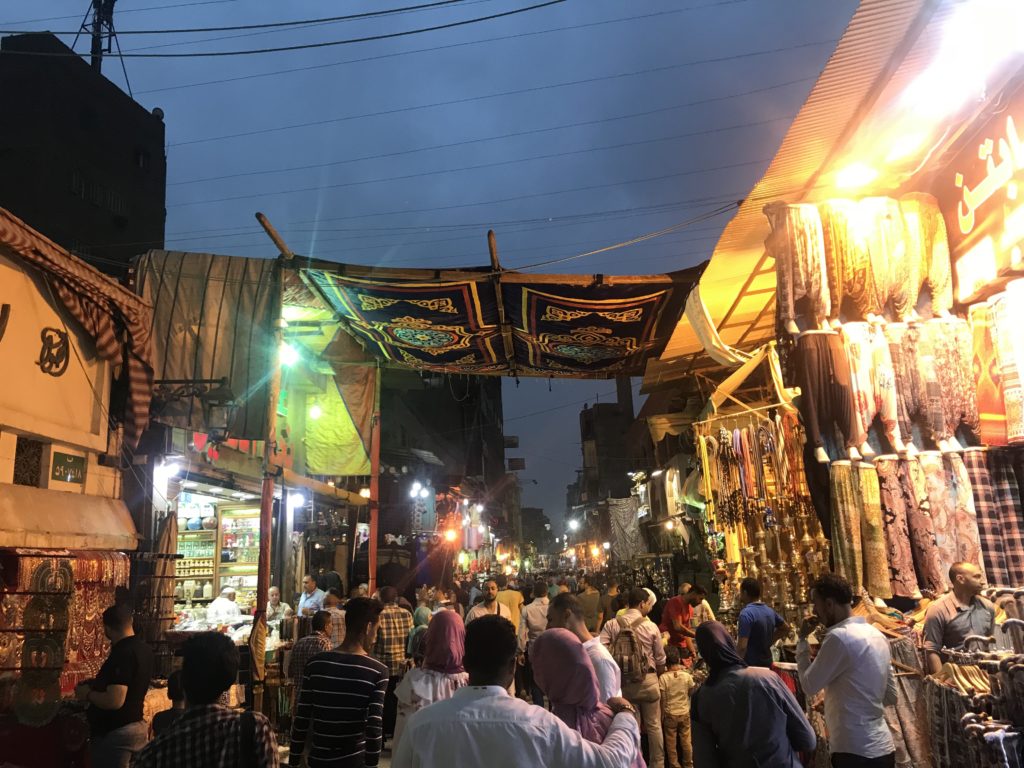
Then we realized that everything is dusty, always. The weather in my weather app was literally dust. People are constantly dusting, whipping and washing everything. The clothing in the market all comes packaged in ziplock bags to keep it clean and the baked goods are all covered with cloth. You can see it in the buildings which have aged faster than they should, with windows covered by dusty curtains and awnings. I couldn’t even keep my eyes open sometimes because when the wind blew, the dust blew with it. Nowhere is safe from the desert’s dust.
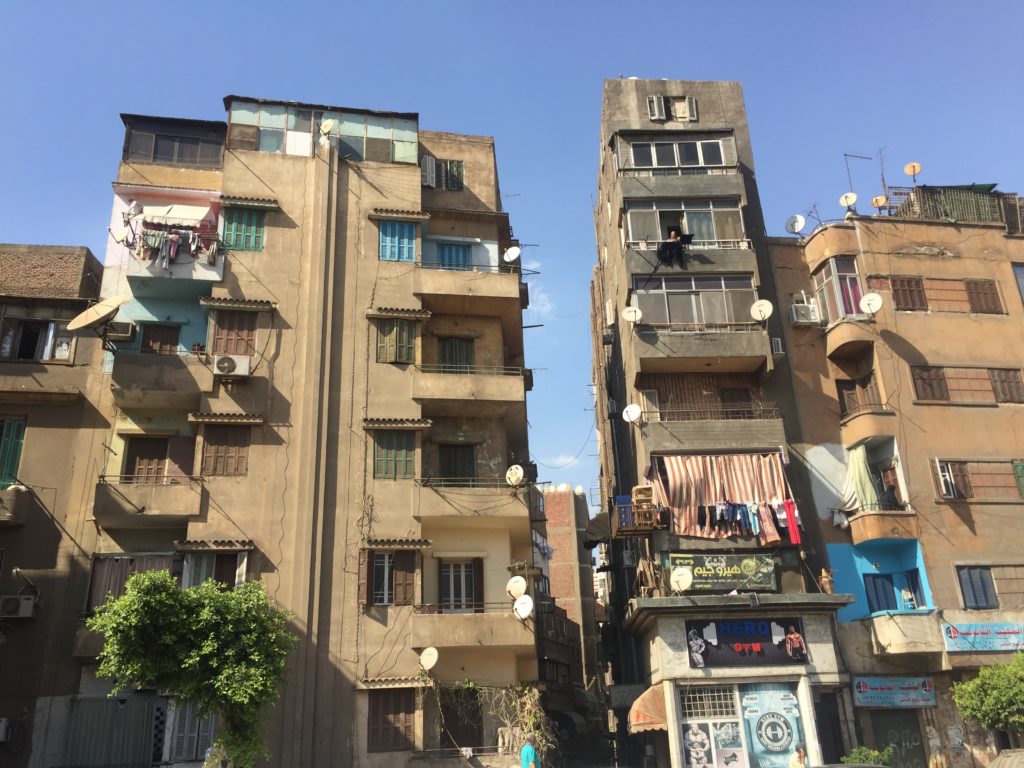
The buildings in Cairo all looked aged, having been exposed to the desert sun and sand for too long.
As we got closer to Old Cairo, we also noticed that we kind of play fast-and-loose with the rules here. Double parking is mostly okay, traffic lights are more of a suggestion, and it’s totally acceptable to jump from the train platform and walk across the tracks to the other side. At one point, we arrived at an intersection of a major street that was blocked by a fence. It didn’t stop anyone. Swarms of people just walked straight into the busy traffic, climbed through a hole in the fence, and carried on.

The fence meant to prevent pedestrians from crossing a major busy street does absolutely no good as people line up to crawl through the one gap in the fence.
Everywhere you turn in Cairo, something will catch your eye. There were people on bicycles riding one handed through the crowded streets while balancing three trays of bread on their head. There were donkeys pulling wooden wagons piled high with fresh produce. Stalls were overflowing with perfumes, spices and gorgeous lanterns, and sales people tried to woo us into their shops (usually by saying “hola” because we’re often mistaken for hispanic in the Middle East). We saw rivers lined by banks of trash and armored tanks as bank security.
And all of this was just on our first night!

A bike rides one-handed carrying a double tray of bread on his head.
Other than the city being completely overwhelming, we did immediately make our way to the most essential of tourist activities in all of Egypt: The Pyramids of Giza! And they immediately made all the chaos worth it. You can read a full recap of our visit to the Great Pyramids over here.
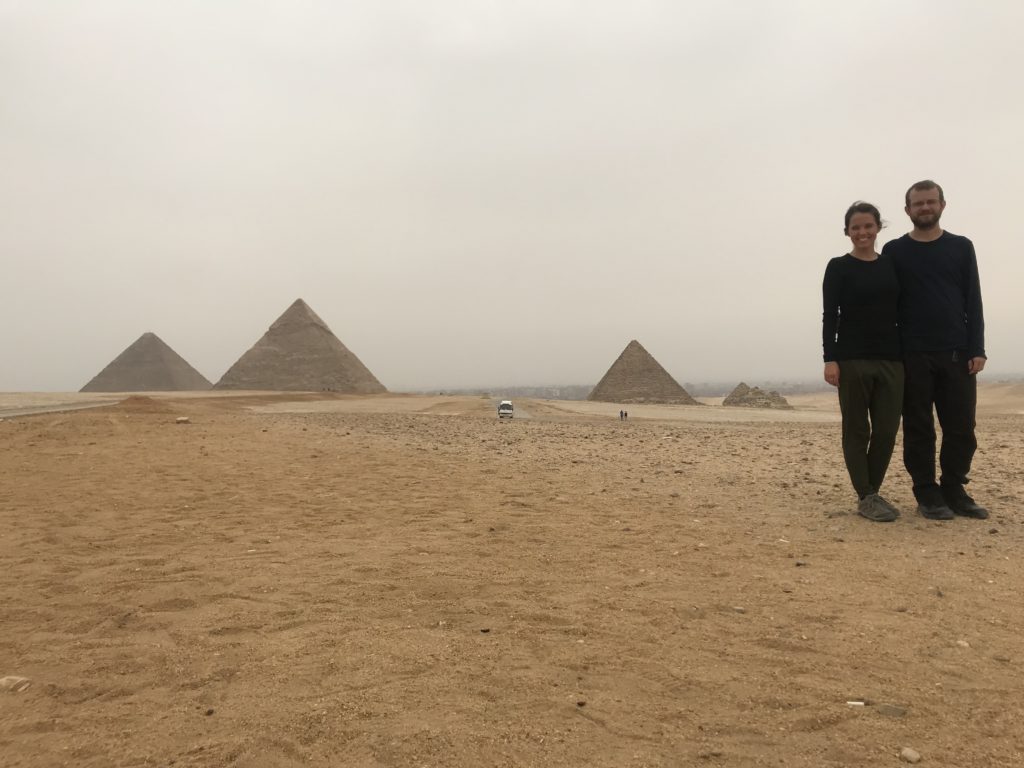
After three days in Cairo, we’ll be making our way to Luxor, then taking a Nile cruise to Aswan before returning to Cairo for one final night before departing Egypt.
First Impressions on Egypt:
- The country seriously needs to invest in its tourism industry. Egypt is home to some of the world’s most incredible historical sites, but the country has done very little to develop an appealing tourism environment around them. The sites (specifically referring to the Giza Plateau, Memphis, Saqqara and Dahshur) are poorly managed and filled with scammers, there’s trash everywhere, and the roads to many of the sites aren’t even properly built. There is no regulation around pricing or policies, making it nearly impossible to visit without a guide (which are grossly overpriced). For too long, the country’s tourism industry soared and they got by on history appeal alone. But when their country went through a period of political turmoil and they were forced to compete with other major historical sites like Angkor Wat and Machu Picchu for tourist dollars, their tourism plummeted and they didn’t do anything about it. Without some serious work in this sector, their tourism industry will continue to suffer. There’s a lot of analysis that could go into a lengthy discussion on this topic.

- They don’t drink, so they smoke. Egypt’s population is >90% Muslim. Muslims don’t drink alcohol. So instead of going out for a cocktail at night or ordering a beer with dinner, they smoke shisha. During lunch time and especially in the evening, you’ll find nearly every cafe and restaurant filled with people smoking from tall water pipes. There was a popular soccer game on the other day (they are really into soccer here), and all the bars had seats (not tables) overflowing onto the sidewalks, where people sat smoking shisha and watching the game. You don’t realize how much alcohol dominates our social lives until you see it replaced with something else.
- Their coffee culture is different. We wrote a blog post about how we love the consistency of coffee shops around the world; how no matter where we go around the world, we can find a coffee shop that feels like home. We take that back. We actually really struggled to find that in Cairo. The local coffee style is Turkish coffee, and it’s usually sold from tiny street stands that people will grab on the go. People here also tend to just get coffee with their meal at a restaurant. What stands out more than that though is how few people actually drink coffee in the morning. It’s more of an afternoon/evening thing here. We did manage to find a cafe on our third day and were so excited that we stayed for two rounds.
What you need to know — Egypt:
- Population: Cairo: 19.5 million / Luxor: 500,000 / Aswan: 300,000
- Altitude Temperature: The average for this time of year is 93°F, but we’ve had some unseasonably cool weather in the low 80s.
- Exchange Rate: 17.64 EGP to $1 USD
- Primary Language: Arabic and English
- Walking Tour: Yes, but definitely not free. Lots of guided tours for hire.
- Time Zone: Eastern European Time, UTC +2 (7 hours ahead of US Central Time)
- Taxi: Yes
- Uber: Cairo: Yes / Luxor: No / Aswan: No
- Public Transit: There are trains in Cairo, but they are not on Google maps so it’s hard to navigate them. Cairo also has a rideshare situation, but it seems like only locals know how to do it.
- Emergency Number: 122 for emergency police or 126 for tourism police
- Running: No. I could not imagine running in Cairo. It’s too crowded, the traffic is too thick, and there’s not a lot of park space (as in I haven’t seen a single park). I’ll keep you posted on Luxor and Aswan though.
- American Football: No longer in season.
- Starbucks: Cairo: Yes / Luxor: No / Aswan: No
- Local Starbucks Specialty: Not sure. We are not near a Starbucks sadly.
- McDonald’s Veggie Burger: No.
- Coffee Price: 30 – 45 EGP (~$1.70 – $2.40 USD) for a cold brew or latte
- Beer Price: Pretty cheap if you find yourself at a place that sells it! We got two large bottles of local Egyptian beer (Stella and Sakara) for about 40 EGP each (~$2.25 USD)

A busy square near the main market of Khan el-Khalili is lined by the beautiful Al-Hussein Mosque

